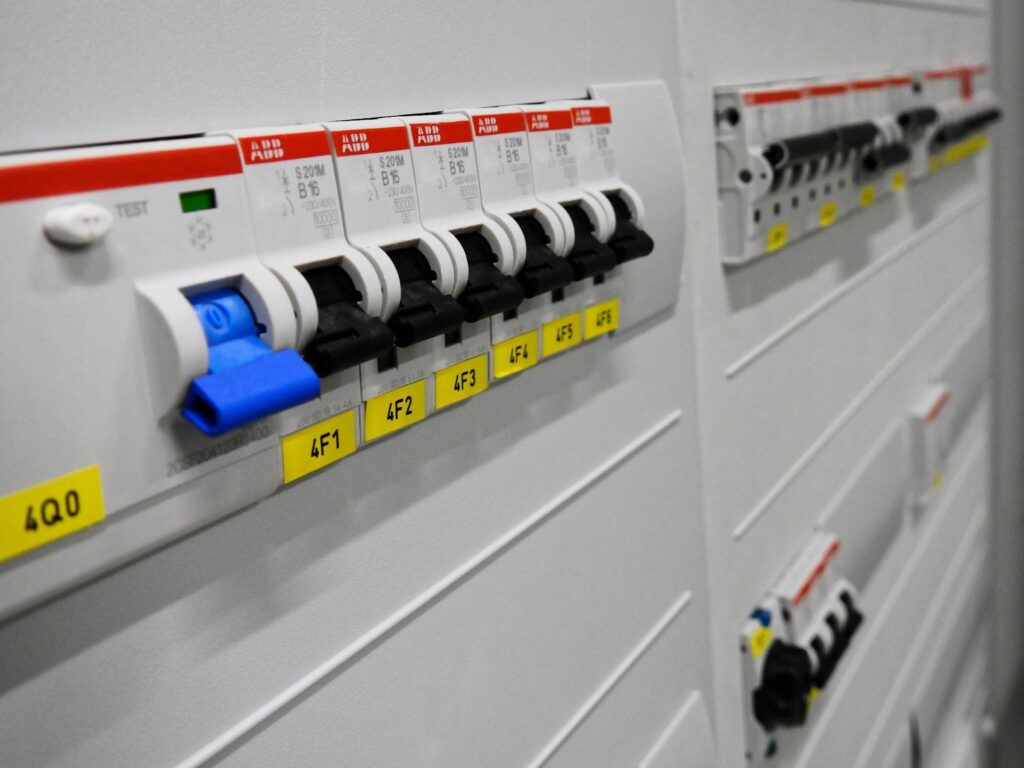
In electrical power systems, electrical switchgear is an essential part that controls, safeguards, and isolates electrical equipment. It’s possible that many people are unaware of the basics of switchgear, despite its significance. We’ll go over the fundamentals of electrical switchgear in this blog, explaining its uses, types, components, and purpose in an understandable way.
Understanding the Purpose of Electrical Switchgear
Control and Protection
At its core, electrical switchgear is designed to control the flow of electrical power within a system and protect the connected equipment from damage caused by overloads, short circuits, and other faults. It acts as a central hub for managing the distribution of electricity, ensuring that power is safely and efficiently delivered to where it’s needed.
Isolation
In addition to control and protection, switchgear also provides a means of isolating electrical equipment for maintenance, repair, or servicing. By isolating specific circuits or sections of the electrical system, workers can safely work on the equipment without the risk of electrocution or other hazards.
Note:- If you want to get help from Al Arz Electrical and have questions about Electrical Switchgear UAE. Al Arz Electrical’s experience with electrical equipment allows them to offer insightful advice that is customized to each customer’s needs.looks forward to contacting Al Arz Electrical for professional advice on choosing the best switchgear solutions for his needs.
Components of Electrical Switchgear
Circuit Breakers
One of the key components of electrical switchgear is the circuit breaker, which is responsible for interrupting the flow of electricity in the event of an overload or fault. Circuit breakers come in various types and configurations, including air circuit breakers, vacuum circuit breakers, and molded case circuit breakers.
Disconnect Switches
Disconnect switches, also known as isolators, are used to physically disconnect electrical equipment from the power source. Unlike circuit breakers, which are designed to interrupt the flow of electricity automatically, disconnect switches are manually operated and provide a visible means of isolation.
Protective Relays
Protective relays are another essential component of switchgear, monitoring electrical parameters such as voltage, current, and frequency to detect abnormal conditions. When a fault is detected, protective relays send signals to circuit breakers or other protective devices to initiate the appropriate response.
Types of Electrical Switchgear

Low Voltage Switchgear
Low voltage switchgear is typically used in residential, commercial, and industrial applications where the voltage levels do not exceed 1,000 volts. It includes distribution panels, circuit breakers, and other protective devices designed for low voltage operation.
Medium Voltage Switchgear
Medium voltage switchgear is used in applications where the voltage levels range from 1,000 to 33,000 volts. It is commonly found in substations, industrial facilities, and power distribution networks, providing protection and control for medium voltage circuits.
High Voltage Switchgear
High voltage switchgear is designed for voltage levels above 33,000 volts and is used in transmission and distribution systems to control the flow of electricity over long distances. It includes specialized equipment such as gas-insulated switchgear (GIS) and circuit breakers capable of handling high voltages and currents.
Applications of Electrical Switchgear
Power Generation
Electrical switchgear plays a critical role in power generation facilities, where it is used to control the flow of electricity from generators to transformers and distribution networks. It ensures that power is delivered safely and efficiently to homes, businesses, and other end-users.
Industrial Facilities
In industrial facilities such as manufacturing plants and refineries, switchgear is used to control and protect electrical equipment, machinery, and processes. It helps maintain the reliability and uptime of critical systems while ensuring the safety of workers and assets.
Commercial Buildings
In commercial buildings such as office complexes, shopping malls, and hospitals, switchgear is used to distribute power to lighting, HVAC systems, elevators, and other electrical loads. It provides reliable and efficient power distribution while protecting against electrical faults and outages.
Conclusion
In summary, electrical switchgear is a fundamental component of electrical power systems, providing control, protection, and isolation for electrical equipment. By understanding its purpose, components, types, and applications, individuals can gain a better appreciation for the critical role that switchgear plays in ensuring the safe and reliable delivery of electricity. Whether in residential, commercial, or industrial settings, switchgear is essential for maintaining the integrity and efficiency of electrical systems.
Note :- To Read More Articles Visit on aphelonline.
